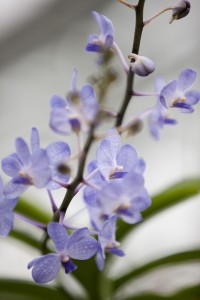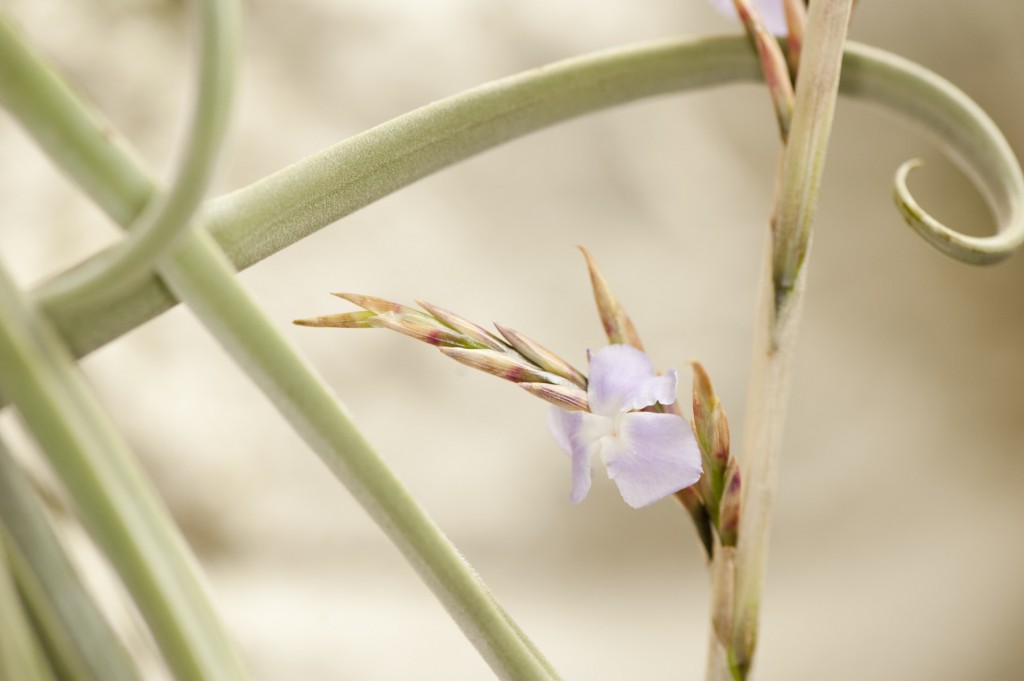New Heights for Orchids
Posted in Horticulture on March 4 2015, by Sonia Uyterhoeven
Sonia Uyterhoeven is NYBG‘s Gardener for Public Education.
 Most of us grow our plants in soil—we fuss over potting mixes for containers and we amend our planting beds with leaf mould or compost. For those of us who don’t like to get our hands dirty, there is an alternative. Members of the Orchidaceae family love to show off their roots, and many of them were destined to climb. Some 70% of all orchids, in fact, are epiphytic.
Most of us grow our plants in soil—we fuss over potting mixes for containers and we amend our planting beds with leaf mould or compost. For those of us who don’t like to get our hands dirty, there is an alternative. Members of the Orchidaceae family love to show off their roots, and many of them were destined to climb. Some 70% of all orchids, in fact, are epiphytic.
Orchids that dangle in the air—sometimes known colloquially as air plants—are classified as epiphytes. Epi means “on top,” and phyte means “plant”—essentially adding up to a plant that grows on top of another plant. The relation an epiphyte has with the host is not parasitic (where it is harming the host), nor is it symbiotic/mutualistic (where both parties benefit, but rather commensalistic (when one benefits and the other is neutral). The term commensalism is derived from the Latin for “sharing a table.”
Like anything in life, adaptation to an aerial environment has its pros and cons. Plants grow in the upper echelons of the forest canopy in order to receive better light, a habit that also protects them from herbivores that roam the forest floor.
While the appeal for new accommodations with a spectacular view is enticing, the cons of co-habitation up in the forest canopy are significant. Orchids need to find a way to attach themselves to their obliging hosts. No longer with their roots firmly planted in the soil, they not only need to find a means of support but also ways to effectively take up moisture and nutrients.

